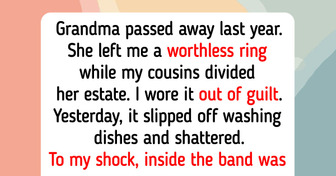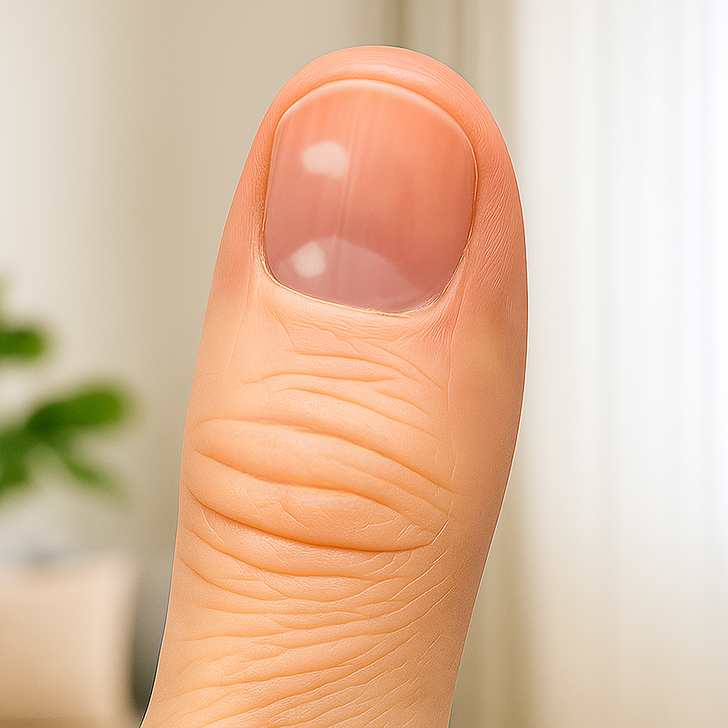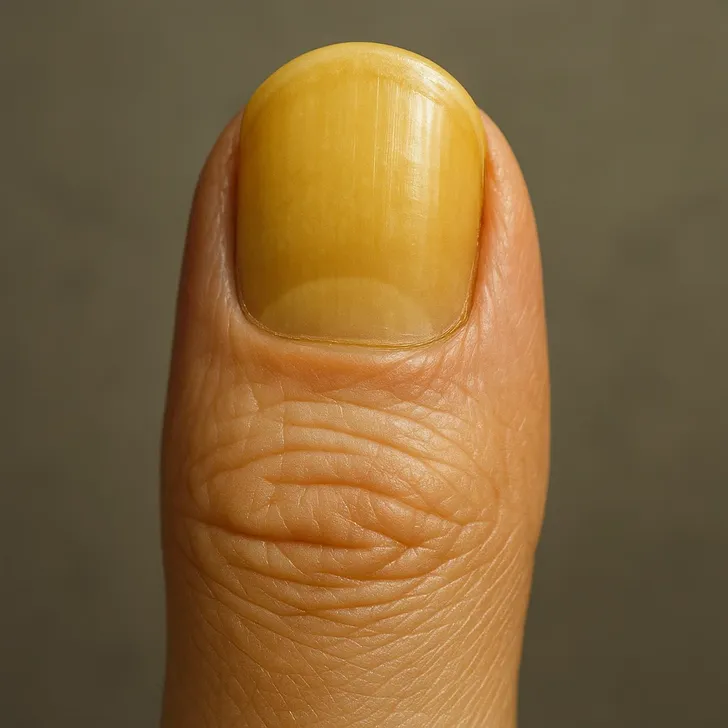This looks like a healthy finger to me, but the rest of the article is eye-opening. Wow, thanks bright side!
5 Serious Health Problems Your Nails Could Be Trying to Warn You About

Most people think of nails as something you paint, trim, or show off, but they’re actually tiny health reporters. The way your nails look and grow can tell you a lot about what’s happening inside your body, sometimes even before you feel any symptoms. Once you start paying attention to them, it’s hard not to get curious.
Why do your nails deserve more attention?

Your nails begin in a little factory called the nail matrix, where new cells are constantly being made. If anything messes with that process (stress, illness, nutrient issues), you’ll often see it right on the surface. What’s wild is that plenty of conditions you’d never connect to your nails can show up there first: things like thyroid problems, anemia, or even diabetes. It’s your body’s way of whispering, “Hey, something’s off.”
Healthy nails also do more than look good. They protect your fingertips from infections and everyday bumps you barely notice. And here’s the key part: changes like odd discoloration, unusual ridges, or random white spots aren’t just cosmetic quirks. Sometimes, they’re early warning signs that can lead you to a diagnosis long before things get serious.
1. White spots.
Ever notice tiny white specks on your nails and wonder what they’re trying to tell you? Those little marks (called leukonychia) are usually nothing to stress about. Most of the time, they pop up after you accidentally bump or press your nail without even realizing it.
But here’s the interesting part: in some cases, those white spots can be your body waving a small flag. They might hint at a zinc deficiency or other nutritional gaps, especially if you’re seeing them over and over again. And if they show up alongside other symptoms (like fatigue, hair changes, or brittle nails), it’s worth getting things checked out just to be sure.
2. Dark lines.
If you’ve ever spotted a dark brown or black line running down your fingernail or toenail and thought, “Is this normal?” that streak is called melanonychia. It usually shows up as a vertical stripe starting near the base of the nail and stretching to the tip, and it can appear on one nail or several. For people with naturally darker skin, these lines can be completely normal.
But melanonychia can also pop up for many other reasons: anything from trauma, friction, and nutritional gaps to hormonal changes, infections, or certain medications. In some cases, it’s caused by pigment cells simply becoming more active; in others, the number of pigment cells actually increases, which can be harmless or, rarely, a sign of something more serious.
3. Ridged nails.

If you’ve ever run your fingertip across your nail and felt little grooves, you’re not imagining things—those are nail ridges. The vertical ones, which run from the base of your nail to the tip, are super common and usually nothing to worry about. They tend to show up more as we get older, almost like tiny reminders that our nails age right along with us.
Horizontal ridges, though (often called Beau’s lines), tell a different story. These can appear when something temporarily disrupts nail growth, like a major illness, high stress, or another systemic issue your body has dealt with. They’re basically timestamps your nails leave behind, marking moments when your body was under pressure. If you spot new or repeating horizontal ridges, it’s worth checking in with a healthcare professional to understand what might be going on underneath.
4. Hangnail.

A hangnail might look tiny, but it can be surprisingly annoying. It’s that little flap of skin that sticks out near the side of your nail (most often on your fingers) and it can sting, snag on things, or turn red and sore. Dry air, frequent handwashing, and habits like biting your nails or trimming your cuticles too aggressively all make hangnails more likely. And while they seem harmless, they can become a problem if bacteria or fungi slip into the torn skin, leading to an infection called paronychia.
The good news is that most hangnails are easy to deal with at home. The safest approach is simple: wash your hands, sanitize your nail clippers, and gently trim off the loose skin, but never bite or rip it. Warm-water soaks and a little antibacterial ointment can help calm swelling or irritation. But if the area becomes very painful, swollen, or just isn’t healing, it’s worth having a doctor take a look. A quick treatment can prevent complications and help your nail get back to normal.
5. Yellow nails.
If you notice your nails turning yellow, it’s more than just a cosmetic issue. It can be a signal from your body. Yellowing nails can happen for several reasons, from fungal infections and yellow nail syndrome to underlying health issues like thyroid problems or respiratory conditions. Along with the color change, your nails might grow slower than usual or become thicker and harder to manage.
Because yellow nails can point to a range of causes, it’s important not to ignore them. Persistent yellowing is a sign to check in with a healthcare professional, who can pinpoint the root cause and recommend the right treatment. Catching the problem early makes it easier to restore your nails to their healthy, natural state.
CONTENT IS PROVIDED FOR INFORMATIONAL PURPOSES ONLY AND IS NOT INTENDED AS A SUBSTITUTE OF MEDICAL ADVICE. SEEK GUIDANCE OF YOUR DOCTOR REGARDING YOUR HEALTH AND MEDICAL CONDITIONS.
Comments
I hate hangnails. Very painful when you try to trim off the loose skin😭
Related Reads
11 Stories That Prove Kindness Is Not Weakness, It’s a Healing Superpower

20 Moments When Kindness Stepped In Like a Guardian Angel

I Told My SIL to Leave My Birthday After She Cut My Cake—Now My Whole Family Is Punishing Me

12 Stories That Prove Little Acts of Kindness Never Stay Little

15 Stories That Show Kindness Is the Quiet Power the World Often Forgets

I Closed My Doors to My Entitled In-Laws on the Weekend and I Don’t Regret It

I Refused to Share My Inheritance, Now My Own Kids Are Turning Against Me

I Caught My MIL Secretly Filming Me While I Breastfed My Baby

I’m Not Delaying My Retirement for My Sick Daughter — I’m Done Being Her Cash Cow

I Discovered My Firm Was Secretly Hiring for My Position—HR’s Response Shocked Me

10 True Stories With an Ending So Twisted They Deserve an Oscar

I Refuse to Let My Spoiled Stepson Ruin Our Family



